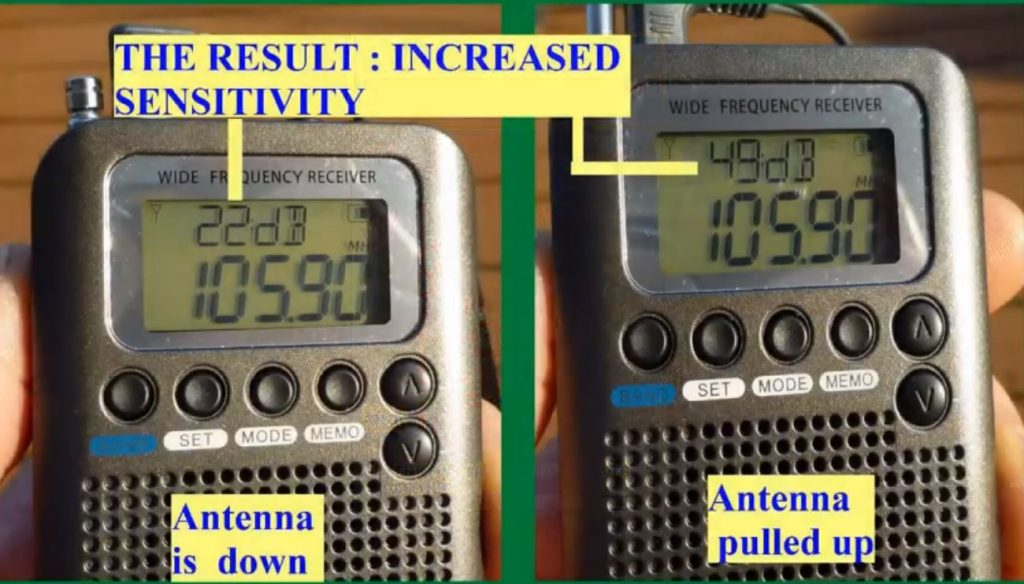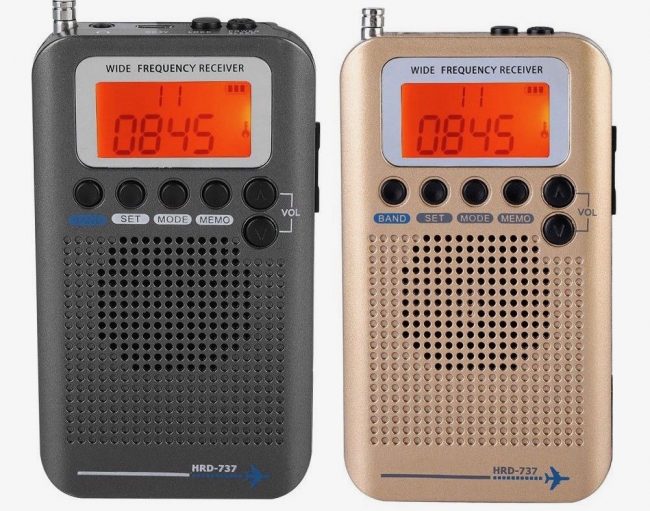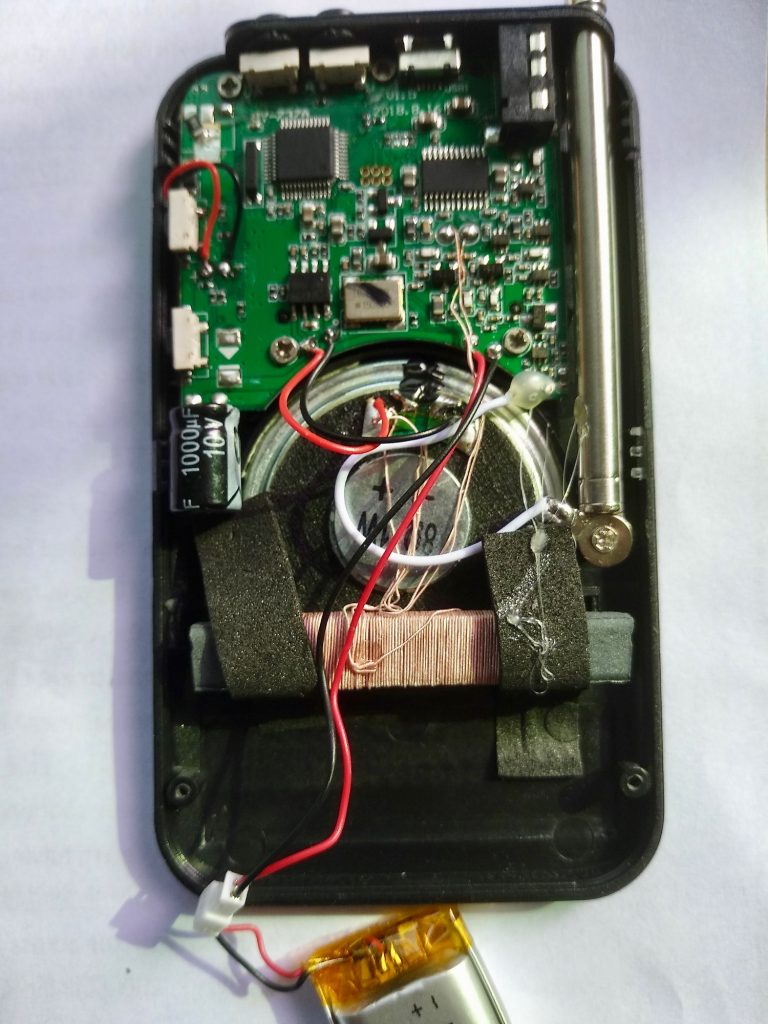Many thanks to SWLing Post contributor, Imre Olajos, who writes:
Hi, HRD 737 lovers! I have a good news!
I (became brave enough to) modify my HRD-737.
I tried reverse-engineering- but I gave up. No numbers on IC-s. I found specifications for the analog switches (one for each band ) and found information about the transistors around those analog switch IC-s. Nice, 1 GHz fT transistors, all surface mount, so I gave up that line.
I found an NPN SM transistor in a damaged TV remote. It is only a 300 MHz transistor but
I had no better than that, so I started to build a little antenna amplifier circuit, wide band and simple.I lost a few SM capacitors during the soldering but I have plenty of those. So the 1/4 square inch circuit board was finished last week. I tested it with an external 3 volt battery and I found it good working. Today ( 07-27-2019 ) I opened up the HRD-737 and wired it into the radio.
The results are much better than I expected. The HDR-737 became a good shortwave radio!When I touch the built in antenna by my finger, radio is sensing the touch and station comes in. This effect was not there before. Radio became more sensitive on CB band than my Realistic DX392.
I have a YouTube channel [in the following video/slideshow] and I will show you the little ugly but great working circuit in the radio:
Click here to view on YouTube.
Later on next week I will try to record some video of the shortwave reception and post up it on the same YouTube channel.
I am a shortwave lover since 50+ years and I will be very happy to share the good news with others. Now I can listen my Greek music on this little radio, on 9420 kHz. Yes, the radio became [more sensitive than I had hoped].
You can see my other shortwave radios on my YouTube channel too, Have fun and never give up the hope!
Many thanks, Imre, for sharing and documenting this modification. One of the lessons here, too, is that if you have an inexpensive radio like the HanRongDa HRD-737 and you feel tempted to try a modification, there’s little to lose. It’s not like modifying a $1000 transceiver–just dig into the little radio and give it a go. If you harm the radio, you’ve only invested $37 or so in the project. That’s a much better solution than letting it sit on a shelf collecting dust because it’s not sensitive enough! Well played, Imre!



